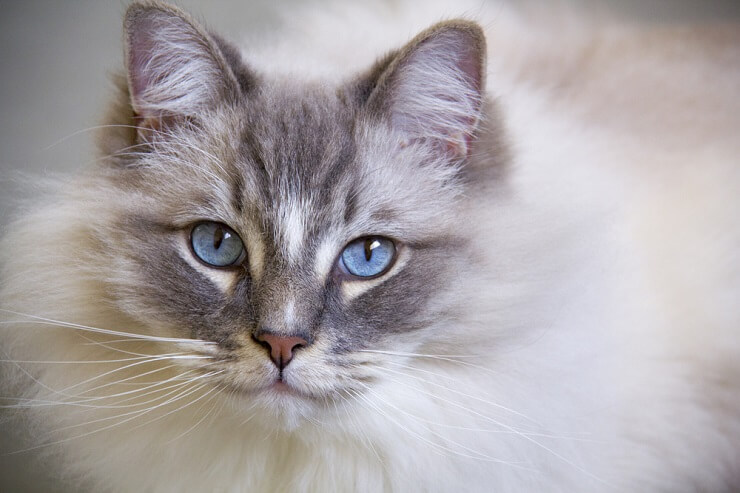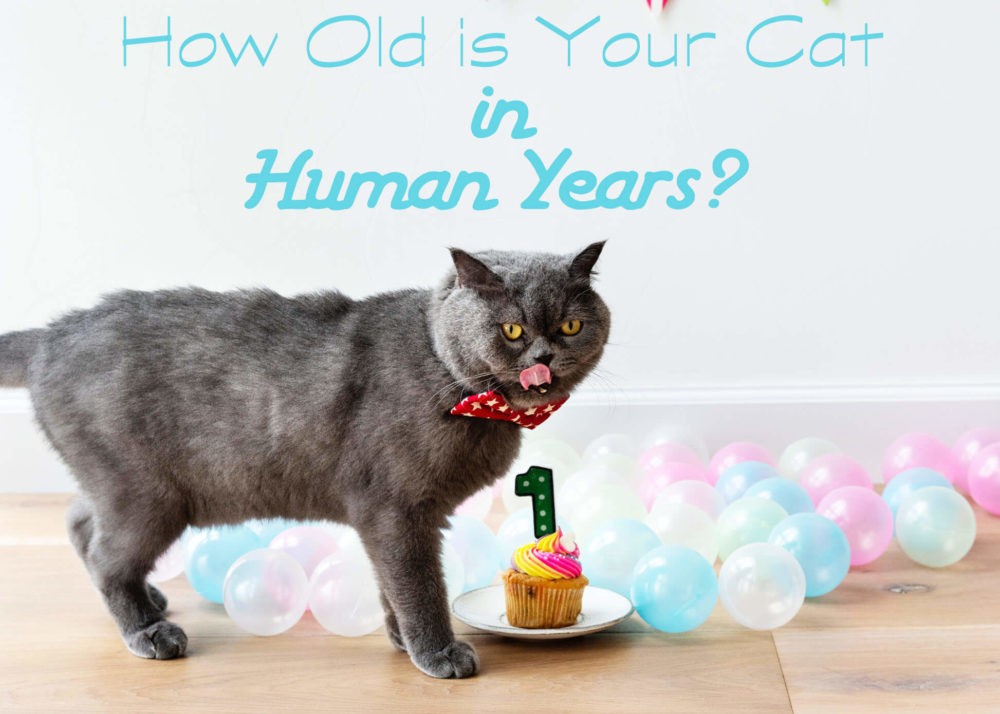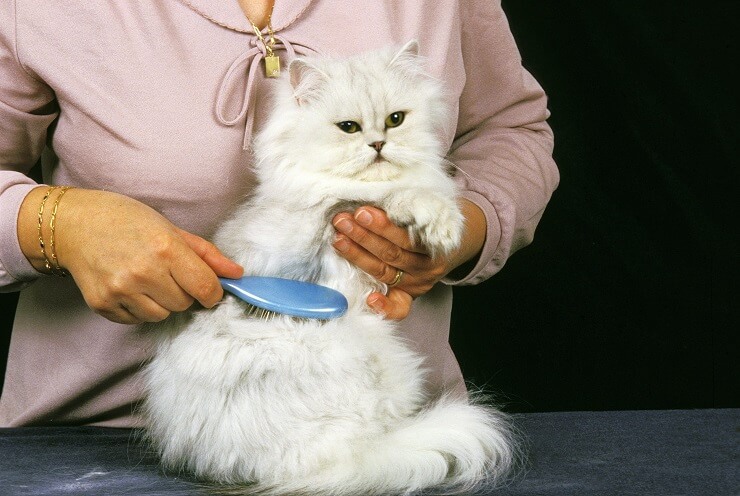Why Do Cats Eat Grass?
This page contains affiliate links. We may earn money or products from the companies mentioned in this post through our independently chosen links, which earn us a commission. Learn More
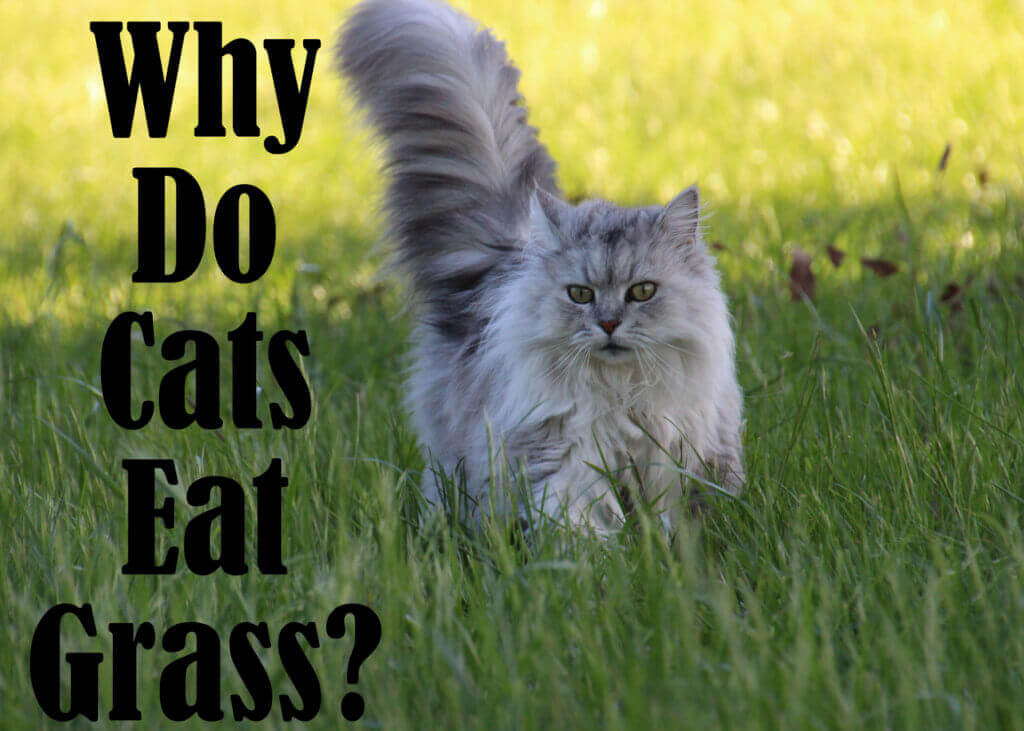
Even though cats are carnivores there are times when they seem to crave some greens. If you see your cat snacking on grass it could mean he is having stomach issues. Grass may also help remove undigested hair from your cat’s digestive system, on either end.
Why Do Cats Eat Grass?
Cats are known to be self-sufficient animals and they have a very well-adapted means of keeping themselves clean and able to determine what their bodies can and can’t digest. They know when to clean out their system to avoid any digestive problems. This is where cat grass comes in.
With the accumulation of cat hair from regular cleanings, cats often hack up hairballs to avoid large amounts from travelling through the digestive system.
Strange as it seems, it is easier to clear out after snacking on some grass. In addition, chewing on grass can also help a cat eject any unwanted bones or feathers swallowed after eating wild prey.
Outdoor cats have the luxury to snack on grass when and where they want. On the down side, the grass in your neighbors yard may have been treated with weed killers, pesticides or other harmful substances.
Eating other greens (including catnip) can also have the same effect as grass, in that it cleans out their system. Cats may also be attracted to indoor plants, some of which might be poisonous.
Benefits
To supplement their diet – Grass juice contains folic acid (B9), a vitamin that supports cats’ growth and helps increase oxygen levels in their blood. If your cat is grazing, it may be because he or she is battling a dietary deficiency and is in search of this vitamin boost.
For natural laxative benefits – Eating grass helps your cat have regular bowel movements, something that is especially important for digestive tracts that are sometimes clogged with fur. While broad blade grass seem to have a laxative effect, narrow blade grass is suspected to help a cat settle an upset stomach.
It relieves an upset stomach – You may notice that your cat vomits shortly after eating grass and he or she is actually doing this on purpose. Cats don’t have the necessary enzymes to digest a large amount of grass, which is why it can make them sick. But in the process of throwing up, your cat also clears his stomach feathers, parasites, fur or bones, which can irritate the digestive tract or even cause damage.
The Best Grass For Your Cat
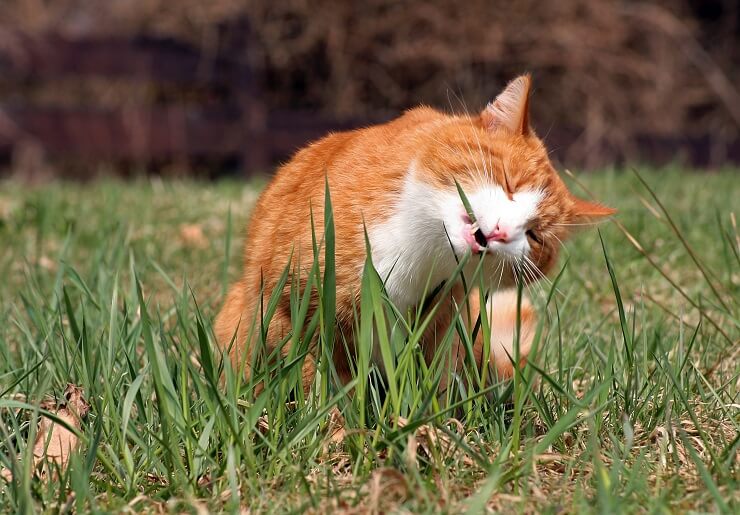
Cat grass refers to any number of cat-friendly grasses, including wheat, oat, rye and barley grasses. These cat be grown indoors for your cat to eat or lay on. Consider mixing several kinds of grass to create a kitty smorgasbord.
Wheat – Wheat grass can help stimulate your cat’s digestion. It helps break down a number of constipation culprits, which commonly include any fur your cat hasn’t already expelled in the form of a hairball.
Oat – Oat grass is a great choice because it acts as a digestive aid to calm the intestinal tract, is high in protein and soluble fiber, and contains levels of iron, manganese, zinc, and B vitamins.
Rye – Cats seem to enjoy lying on rye grass and will maybe eat some as a last resort. The blades are small and soft meaning it will aid in their digestion and usually pass right through, to the litter box.
Barley – Barley grass is a valuable source of fiber and nutrition for your cat. It is known to be a digestive aid, and also helps prevent hairballs.
Grow Your Own Cat Grass
You can purchase seed packs at pet stores, gardening centers or online at Amazon. As mentioned, common cat grass seeds are wheat, oats, rye and barley.
- Choose a planter that is heavy and won’t tip over easy. You will want the container to have drainage holes on the bottom.
- Fill the container to right below 1/2 inch of the rim with a potting mix that has been moistened with water. Lightly press down the mix and add more if necessary to the 1/2 inch of the rim line.
- Add the grass seeds or a mixture of several grasses evenly over the top of the potting mix. Add about 1/4 inch of soil to cover them and press the potting mix firmly over the seeds. Spay with water using a water bottle until moist but not soaked.
- Place plastic over the top ( a plastic bag works) and put container in a warm place that has a constant warm temperature as well as light. This creates a greenhouse effect.
- Sprouts should pop up in 3 to 7 days. When it is about 1 inch high, remove plastic.
- Once it reaches about 4 inches, it is ready to eat. This maybe 10 to 14 days after planting.
- After a few weeks the grass will wilt or die out. Then it is time to start the process over.
You may also opt for a cat grass growing kit like The Cat Ladies Cat Grass Growing Kit.
Other Greens Your Cat Can Eat
- Lemon Grass – This plants benefits are twofold. One it repels mosquitoes, and two it is a good treat for cats when eaten in moderation. It is also easy to grow indoors.
- Catnip – This member of the mint family has earned its reputation as a favorite among cats. Catnip affects about 50% of cats, making them a little crazy. This is an easy one to grow but maybe better kept away and given as a treat.
- Mint – Mint is a great addition to your cat’s garden. It is actually a popular fast growing perennial. It has beautiful purple blooms throughout the year and cats love it! Cats are more likely to sniff and roll around in mint than eat it.
- Valerian – Its clustered white flowers will attract pollinators to the yard and its root can be used as a sleep aid in humans, https://medfitnetwork.org/public/ambien-zolpidem-info/. This pungent plant is also a stimulant for cats and triggers a response similar to that of catnip. Valerian is sometimes used in perfumes, some find the scent unpleasant.
- Parsley – Parsley provides several nutrients to your cat, including beta carotene and potassium. As well as vitamins A, B and C.
- Thyme – This slow growing plant is another cat stimulant and is often effective in cats in which catnip has no effect. In the summer it blooms with strong-scented pink flowers.
- Licorice Root – Cats love the taste of this well known root, but it also happens to be good for their health. An anti-inflammatory, licorice root can sooth an arthritis, promote liver health and help resolve digestive issues.
Conclusion
Whether you have an indoor or an outdoor cat, you should make sure that all your household plants are of the non-toxic variety. You may also want to plant a small tray of grass just for the cat, or start an outdoor garden of herbs and grass. This will give your cat an alternative to the neighbors grass which could lead to accidental ingestion of pesticides, herbicides, or chemicals that may have been used to treat the yard.

